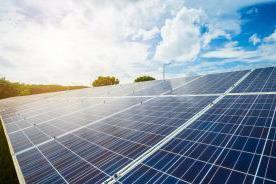New research shows that pre-installing this technology is more cost-effective, saving wind developers and owner-operators at least $300k and up to $11m.
As the wind industry experiences rapid growth, with its value is set to reach $220.7bn by 2028, wind developers and owner-operators are facing increasing public opposition due in part to growing concern over fire risk.
This is according to a new report, Wind power: Benefits of early installation of fire suppression systems, published by Firetrace International, which demonstrates why installing fire suppression systems from the outset is a crucial step, particularly as co-located sites are on the rise.

The report highlights three key factors driving the need for early fire suppression adoption:
- Growing public concern – Communities are increasingly pushing back against wind projects over fire risks.
- Increasing regulatory scrutiny – Governments are implementing stricter fire safety requirements for wind farms.
- The high cost of delaying fire suppression – Delaying installation can lead to installation downtime costs of between $220k-$329k per wind farm and up to $11 million in potential losses per turbine if a catastrophic fire occurs before fire suppression systems are in place.
It also shows that pre-installing this technology is more cost-effective, saving wind developers and owner-operators at least $300k and up to $11m.
Growing public concern
Local communities are becoming increasingly concerned over the safety of wind farms. A study by MIT academics, which analysed 53 renewable energy projects that were delayed or blocked between 2008 and 2021, found that local residents and stakeholders opposed such projects if safety risks had not been adequately addressed.
The industry has already seen battery energy storage projects postponed in the US and Canada over fire safety concerns, and politicians in the UK are calling for these projects to be subject to fire safety checks.
With co-located projects increasing by 90% in 2023, according to The American Clean Power Association, the risk of fire on renewable energy sites is becoming increasingly complex with batteries introducing additional hazards, drawing further public scrutiny.
“Wind developers and owner-operators should install fire suppression systems from the outset, particularly in co-located projects, to win local support and avoid potential delays or cancellations.”
Increasing regulatory scrutiny
The rapid rise in renewable energy projects has also led to greater scrutiny over their safety, with an increasing number of countries and states (US) introducing mandatory fire safety regulations. In the last few years, some of the world’s biggest wind markets – including Australia, France and South Korea – have mandated fire safety systems for all wind farms, joining Germany, which has had these regulations in place for a decade.
With the Inflation Reduction Act (IRA) in the US and Great British Energy in the UK committing significant public funds ($369bn in the US, £8.3bn in the UK) to wind and renewable energy projects, developers and owner-operators also have a responsibility to protect public money and should invest more in protecting assets.
Those who do not prioritise fire safety from the start could face significant fines from regulators or find their projects delayed or cancelled. On top of this, they could also face significant reputational damage if a catastrophic fire were to occur.
“Many wrongly assume that investing in fire suppression systems can wait or will be covered by other parties later in the project’s development and do not look into installation until after a fire incident.”
A false economy
Due to tightening profit margins and rising costs, some developers and owner-operators dismiss fire suppression systems as an unnecessary upfront expense.
However, figures show that delaying the installation of these systems isn’t cost-effective and can lead to installation downtime costs of between $220-329k per wind farm and up to $11m in potential losses per turbine if a fire incident takes place before installation.
Brian Cashion, director of engineering at Firetrace International, said: “Wind developers and owner-operators should install fire suppression systems from the outset, particularly in co-located projects, to win local support and avoid potential delays or cancellations.
“Yet, many wrongly assume that investing in fire suppression systems can wait or will be covered by other parties later in the project’s development and do not look into installation until after a fire incident. This is despite the fact that the cost of pre-installing these systems is less than a rounding error in a project budget.”
“While we need to correct this assumption urgently, we’re already starting to see an increase in the number who have adopted fire suppression systems early on and are seeing significant benefits as a result.
“As the wind market continues to grow, we will hopefully see more doing the same – helping to enhance fire safety standards and best practices across the industry.”












No comments yet